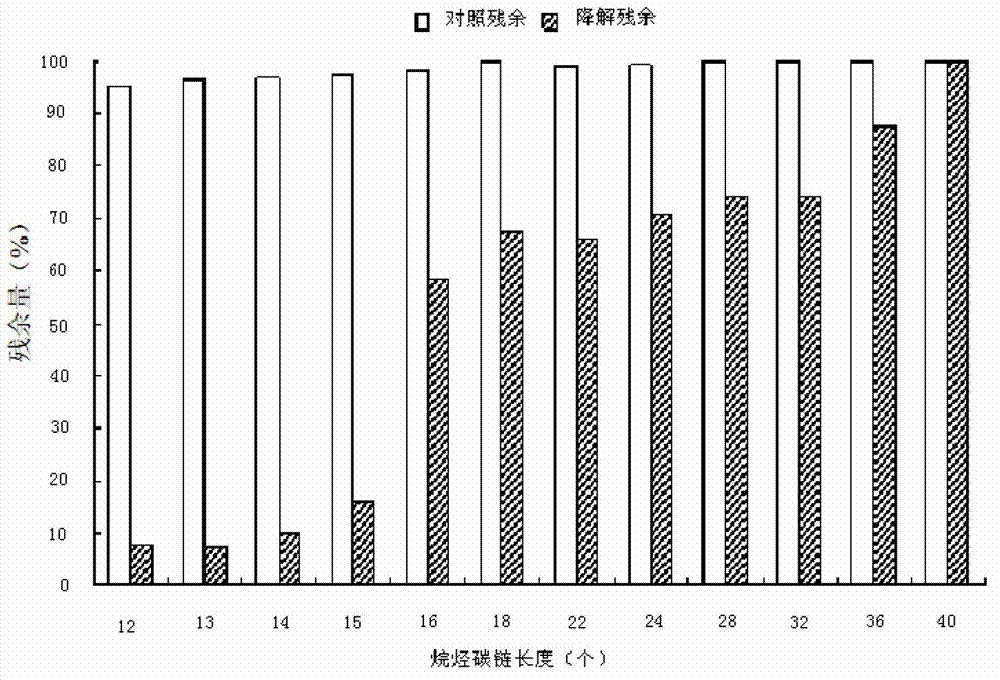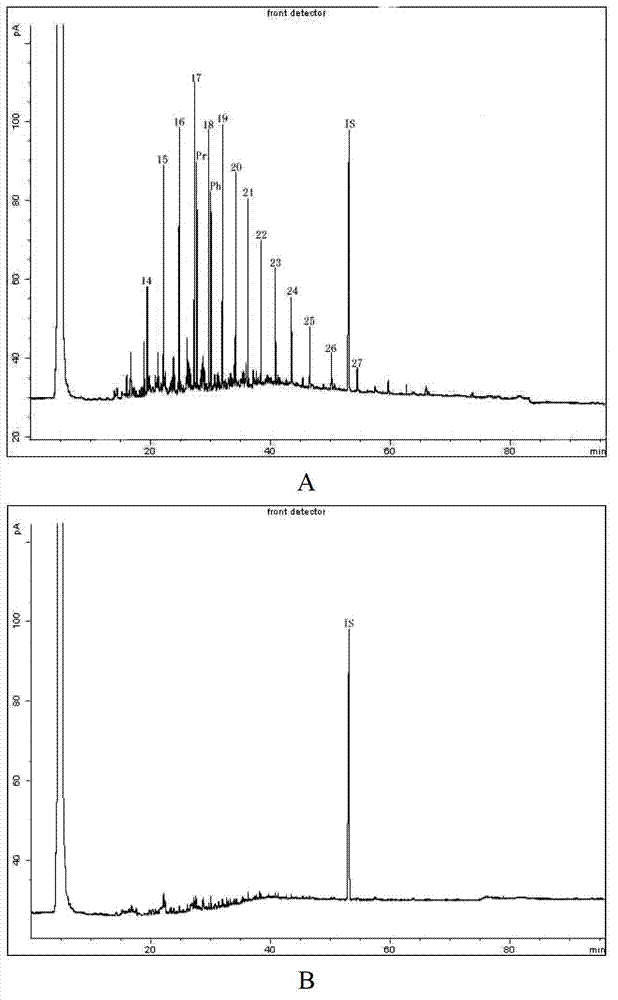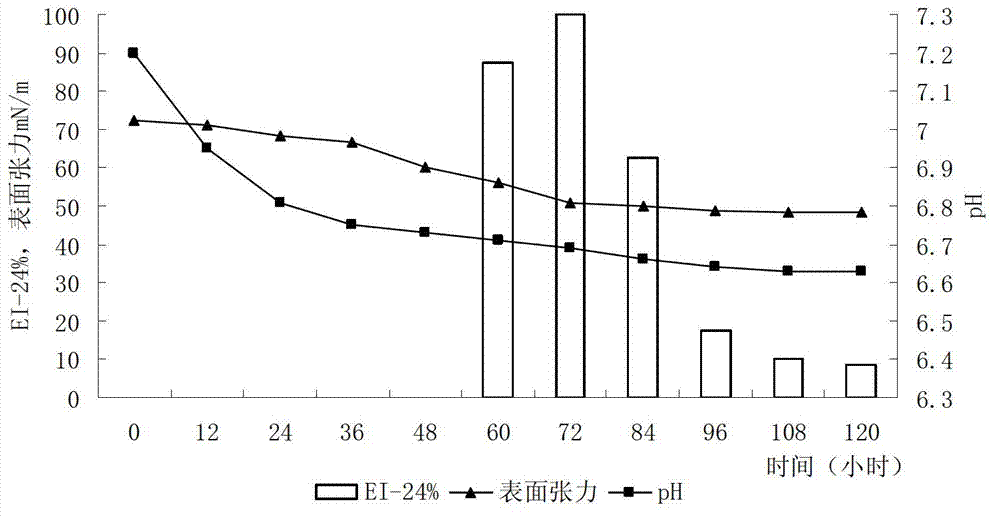Rhodococcus erythropolis T7-3 degrading alkane at low temperature and application thereof
A technology of Rhodococcus erythropolis and strains, which can be applied in the fields of microbial biotechnology and environmental biology, and can solve problems such as oil pollution
- Summary
- Abstract
- Description
- Claims
- Application Information
AI Technical Summary
Problems solved by technology
Method used
Image
Examples
Embodiment 1
[0028] Example 1: Screening of Rhodococcus erythoropolis T7-3 strain provided by the present invention.
[0029] Take mud samples from the seabed area polluted by oil in the Bohai Sea (latitude coordinates are 118°26′36″ east longitude and 38°50′30″ north latitude), and take 5g mud samples in 100mL inorganic salt culture with 2% liquid paraffin as the only carbon source medium (liquid paraffin content 2%), placed on a 200r / min low-temperature shaker at 15°C for enrichment culture for 7 days, and the mixed flora of 7 strains was obtained by streaking and named T7. Aspirate 5mL of the enriched liquid and transfer it to fresh 100mL liquid paraffin medium for fermentation and culture, the culture conditions are the same as above. After three cycles of enrichment, the main strain T7-3 was finally obtained. Take one ring of T7-3 and put it into a test tube filled with 5 mL of LB culture solution, culture it with shaking at 15°C for 48 hours, and use it as a seed solution. Take 1mL...
Embodiment 2
[0032] Example 2: Morphological and physiological and biochemical characteristics of the Rhodococcus erythoropolis T7-3 strain provided by the present invention.
[0033] Refer to the experimental method of "Bergey's Manual of Systematic Bacteriology" (Vol.Ⅷ) to detect its Gram staining, cell size and shape, presence or absence of flagella and spores, growth temperature, growth pH range, and NaCl tolerance. Catalase, nitrate reduction, urease, escin hydrolysis, 2,3-butanediol, aspartic acid, oxidase, M.R., V-P, indole, nitrite reduction, denitrification, gelatin liquefaction, starch hydrolysis , Adenine hydrolysis experiment and the use of mannitol, inositol experiment.
[0034] The results showed that the strain was Gram-positive, and the strain was short rod-shaped, without flagella, immobile, aerobic, and did not produce spores. The cell size was 2.0-3.0 μm (length) × 0.8-1 μm (width), with a typical figure-of-eight arrangement. The growth temperature is 4-34°C, the growt...
Embodiment 3
[0035] Example 3: PCR amplification and sequence determination of the 16S rRNA gene of Rhodococcus erythoropolis T7-3 strain provided by the present invention.
[0036] Inoculate the strain in LB medium, culture it on a shaker at 15°C (130rpm) for 10 hours, collect the bacteria by centrifugation, resuspend, add lysozyme and SDS to break the wall, extract genomic DNA by phenol-chloroform method, and use normal phase primers 27F (5'-GAGAGTTTGATCCTGGCTCAG-3') and reverse primer 1541R (5'-AAGGAGGTGATCCAGCC-3'), use this pair of primers to perform PCR amplification of its 16S rDNA gene, and send the amplified primers to Beijing Sanbo Company for sequencing . The PCR conditions are: 94°C, 10min; 94°C, 45s, 55°C, 45s, 72°C, 90s, 30 cycles; 72°C, 10min, 4°C storage. The length of the 16S rRNA gene sequence is 1470bp, the accession number in GenBank is DQ855406, and the sequence similarity with Rhodococcus erythoropolis (GenBank accession No. AY168586) is 99.93%. The sequence of its ...
PUM
 Login to View More
Login to View More Abstract
Description
Claims
Application Information
 Login to View More
Login to View More - R&D
- Intellectual Property
- Life Sciences
- Materials
- Tech Scout
- Unparalleled Data Quality
- Higher Quality Content
- 60% Fewer Hallucinations
Browse by: Latest US Patents, China's latest patents, Technical Efficacy Thesaurus, Application Domain, Technology Topic, Popular Technical Reports.
© 2025 PatSnap. All rights reserved.Legal|Privacy policy|Modern Slavery Act Transparency Statement|Sitemap|About US| Contact US: help@patsnap.com



